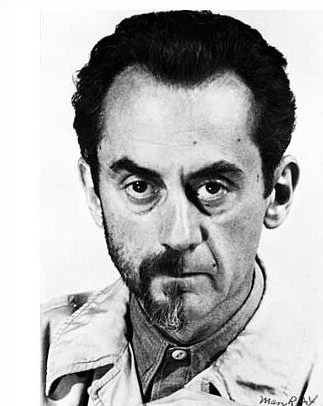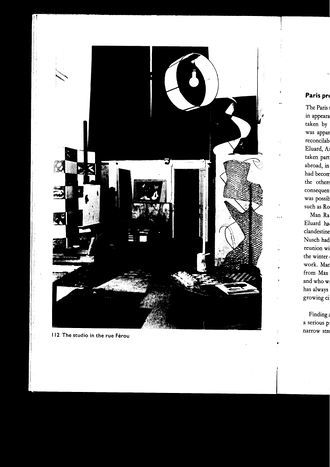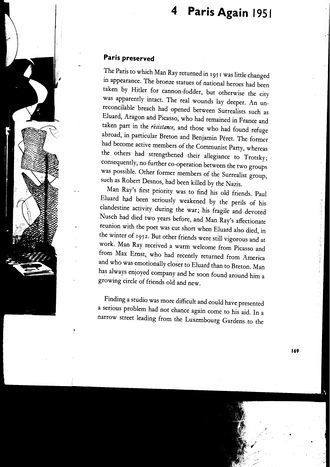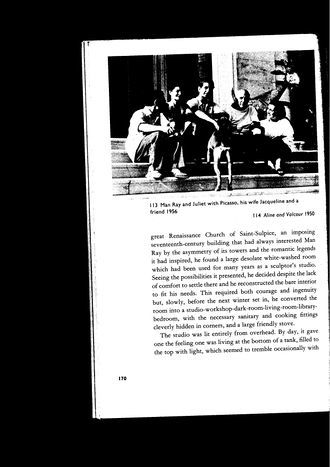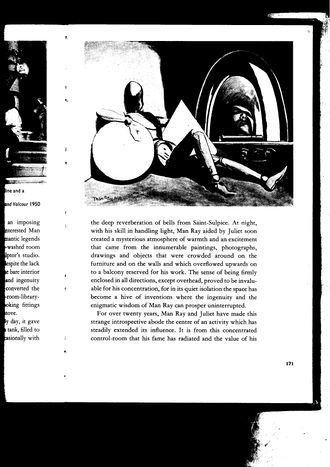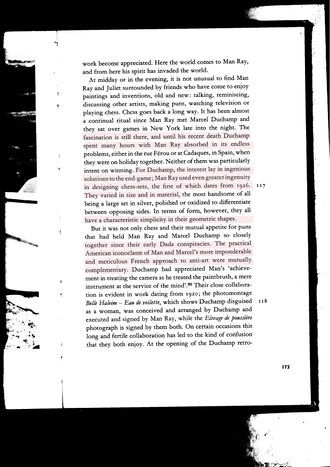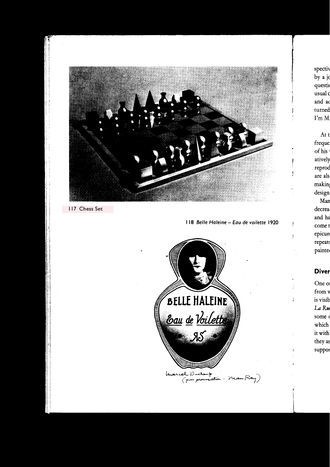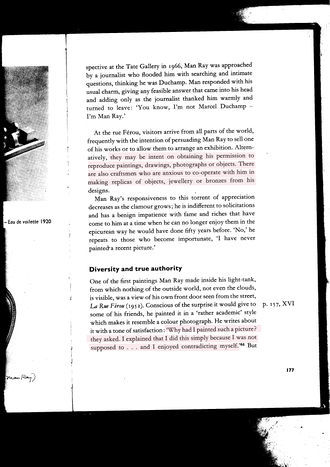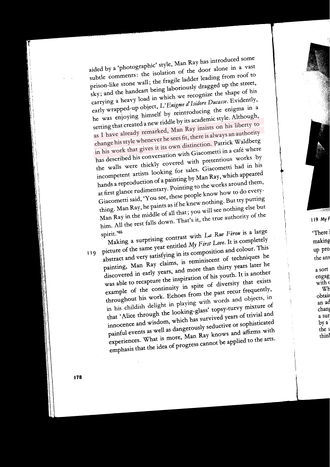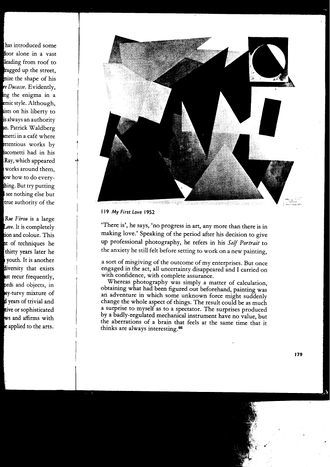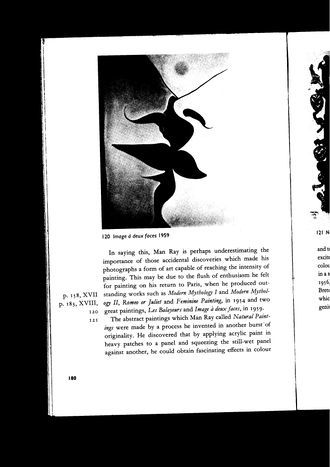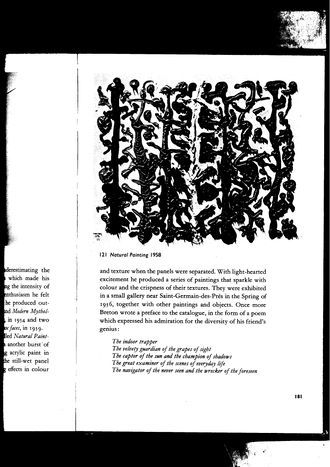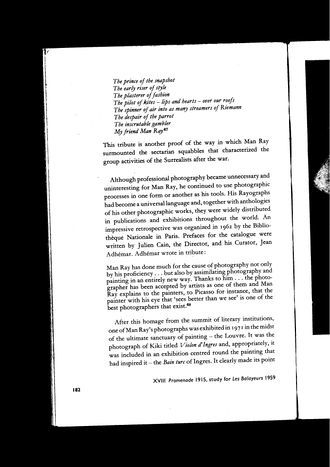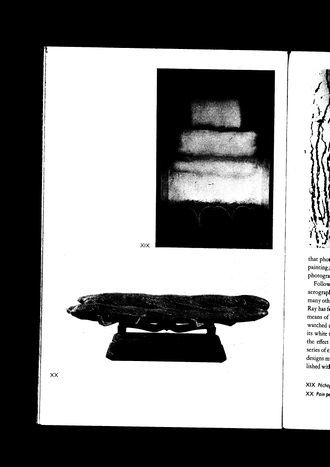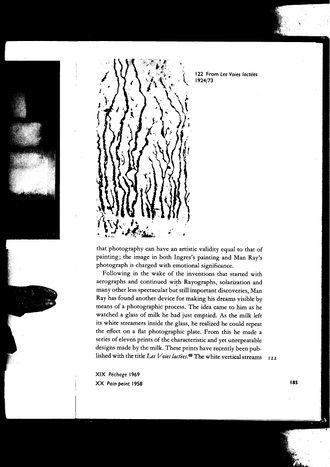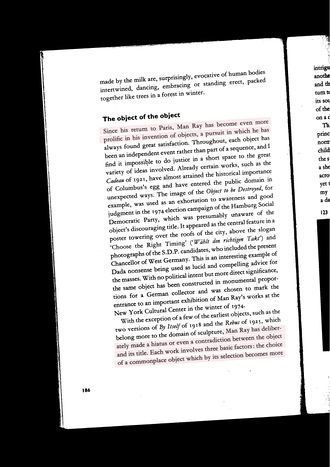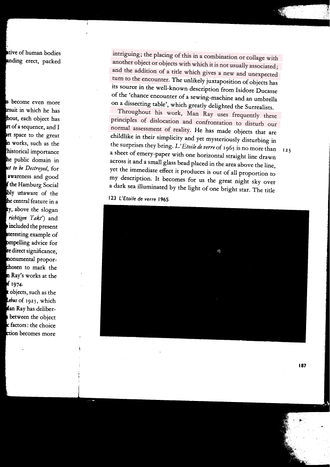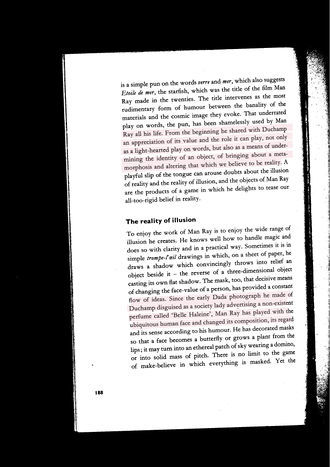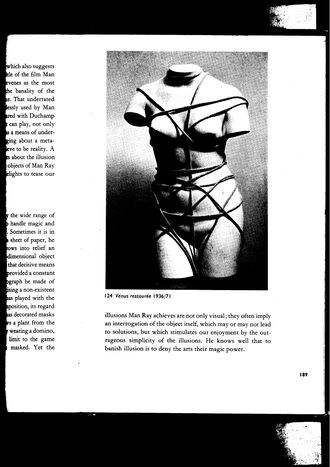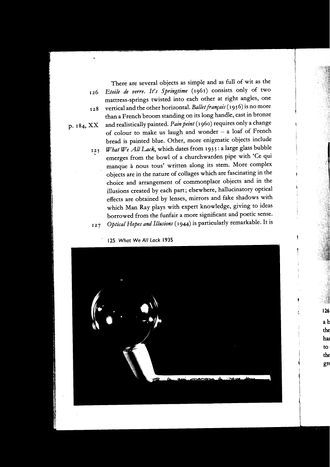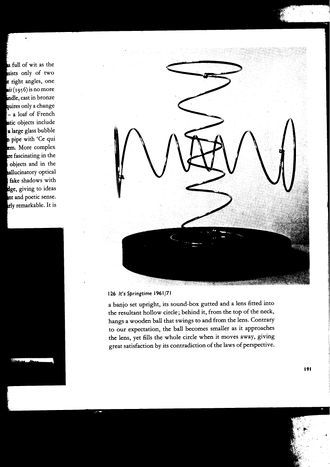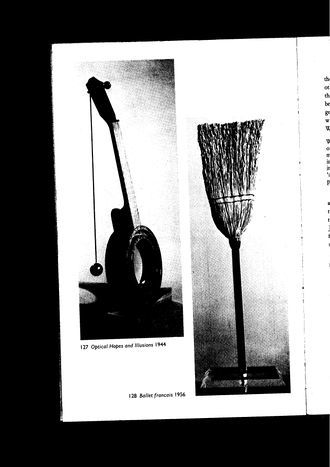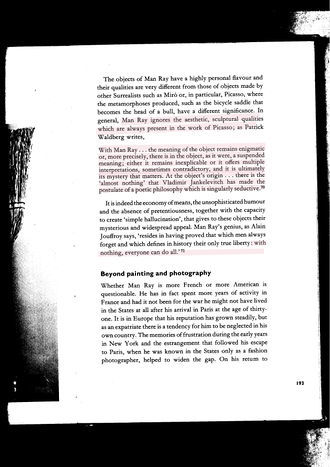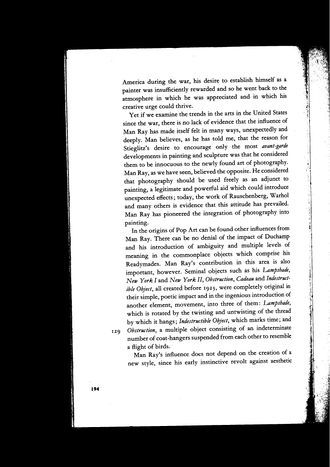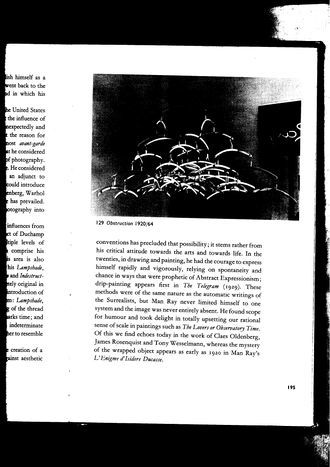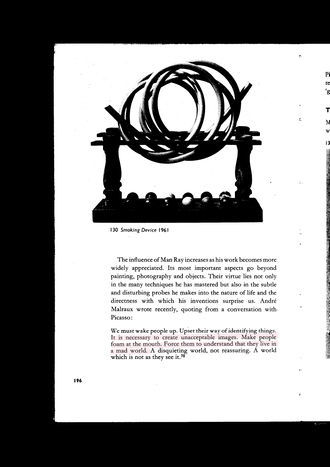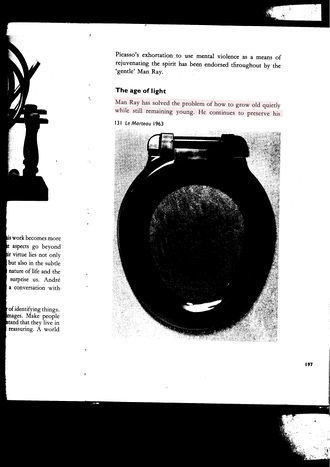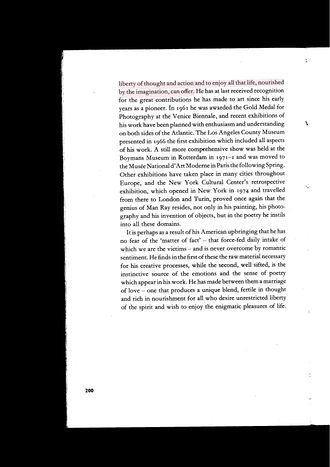MAN RAY BIOGRAPHY
BACKGROUND AND EARY LIFE OF MAN RAY
Man Ray (born Emmanuel Radnitzky, August 27, 1890 – November 18, 1976) was an American modernist artist who spent most of his career in Paris, France. He was a significant contributor to the Dada and Surrealist movements, although his ties to each were informal. He produced major works in a variety of media but considered himself a painter above all. He was best known for his photography, and he was a renowned fashion and portrait photographer. Ray is also noted for his work with photograms, which he called "rayographs" in reference to himself.
man ray - selfportrait 1943
FIRST ARTISTIC ENDEAVORS
Man Ray displayed artistic and mechanical abilities during childhood. His education at Brooklyn's Boys' High School from 1904 to 1909 provided him with solid grounding in drafting and other basic art techniques. While he attended school, he educated himself with frequent visits to the local art museums, where he studied the works of the Old Masters. After his graduation, Ray was offered a scholarship to study architecture but chose to pursue a career as an artist. Ray's parents were disappointed by their son's decision to pursue art, but they agreed to rearrange the family's modest living quarters so that Ray's room could be his studio. Ray remained in the family home over the next four years. During this time, he worked steadily towards becoming a professional painter. Ray earned money as a commercial artist and was a technical illustrator at several Manhattan companies.
The surviving examples of his work from this period indicate that he attempted mostly paintings and drawings in 19th-century styles. He was already an avid admirer of contemporary avant-garde art, such as the European modernists he saw at Alfred Stieglitz's "291" gallery and works by the Ashcan School. However, with a few exceptions, he was not yet able to integrate these trends into his own work. The art classes he sporadically attended—including stints at the National Academy of Design and the Art Students League—were of little apparent benefit to him. When he enrolled in the Ferrer School in the autumn of 1912, he began a period of intense and rapid artistic development.
NEW YORK
While living in New York City, Man Ray was visually influenced by the 1913 Armory Show and galleries of European contemporary works. His early paintings display facets of cubism. After befriending Marcel Duchamp, who was interested in showing movement in static paintings, his works began to depict movement of the figures. An example is the repetitive positions of the dancer's skirts in The Rope Dancer Accompanies Herself with Her Shadows (1916).
In 1915, Man Ray had his first solo show of paintings and drawings after he had taken up residence at an art colony in Ridgefield, New Jersey, across the Hudson River from New York City.[8] His first proto-Dada object, an assemblage titled Self-Portrait, was exhibited the following year. He produced his first significant photographs in 1918.
Man Ray abandoned conventional painting to involve himself with Dada, a radical anti-art movement. He started making objects and developed unique mechanical and photographic methods of making images. For the 1918 version of Rope Dancer, he combined a spray-gun technique with a pen drawing. Like Duchamp, he did readymades—ordinary objects that are selected and modified. His Gift readymade (1921) is a flatiron with metal tacks attached to the bottom, and Enigma of Isidore Ducasse[9] is an unseen object (a sewing machine) wrapped in cloth and tied with cord. Aerograph (1919), another work from this period, was done with airbrush on glass.
In 1920, Ray helped Duchamp make the Rotary Glass Plates, his first machine and one of the earliest examples of kinetic art. It was composed of glass plates turned by a motor. That same year, Man Ray, Katherine Dreier, and Duchamp founded the Société Anonyme, an itinerant collection that was the first museum of modern art in the U.S.
Ray teamed up with Duchamp to publish one issue of New York Dada in 1920. For Man Ray, Dada's experimentation was no match for the wild and chaotic streets of New York. He wrote that "Dada cannot live in New York. All New York is dada, and will not tolerate a rival."
In 1913, Man Ray met his first wife, the Belgian poet Adon Lacroix (Donna Lecoeur) (1887-1975), in New York. They married in 1914, separated in 1919, and formally divorced in 1937.
PARIS
In July 1921, Man Ray went to live and work in Paris, France. He soon settled in the Montparnasse quarter favored by many artists. Shortly after arriving in Paris, he met and fell in love with Kiki de Montparnasse (Alice Prin), an artists' model and celebrated character in Paris bohemian circles. Kiki was Man Ray's companion for most of the 1920s. She became the subject of some of his most famous photographic images and starred in his experimental films, Le Retour à la Raison and L'Étoile de mer. In 1929, he began a love affair with the Surrealist photographer Lee Miller.
Salvador Dalí and Man Ray in Paris, on June 16, 1934 making "wild eyes" for photographer Carl Van Vechten
For the next 20 years in Montparnasse, Man Ray was a distinguished photographer. Significant members of the art world, such as James Joyce, Gertrude Stein, Jean Cocteau, Bridget Bate Tichenor, and Antonin Artaud, posed for his camera.
Man Ray was represented in the first Surrealist exhibition with Jean Arp, Max Ernst, André Masson, Joan Miró, and Pablo Picasso at the Galerie Pierre in Paris in 1925. Important works from this time were a metronome with an eye, originally titled Object to Be Destroyed, and the Violon d'Ingres, a stunning photograph of Kiki de Montparnasse, styled after the painter/musician Ingres. Violon d'Ingres is a popular example of how Man Ray could juxtapose disparate elements in his photography to generate meaning.
In 1934, surrealist artist Méret Oppenheim, known for her fur-covered teacup, posed nude for Man Ray in a well-known series of photographs depicting her standing next to a printing press.
With Lee Miller, his photography assistant and lover, Man Ray reinvented the photographic technique of solarization. He also created a type of photogram he called "rayographs", which he described as "pure dadaism". Duchamp, Man Ray, and Francis Picabia were friends and collaborators. The three were connected by their experimental, entertaining, and innovative art.
Man Ray died in Paris on November 18, 1976 from a lung infection. He was interred in the Cimetière du Montparnasse in Paris.
